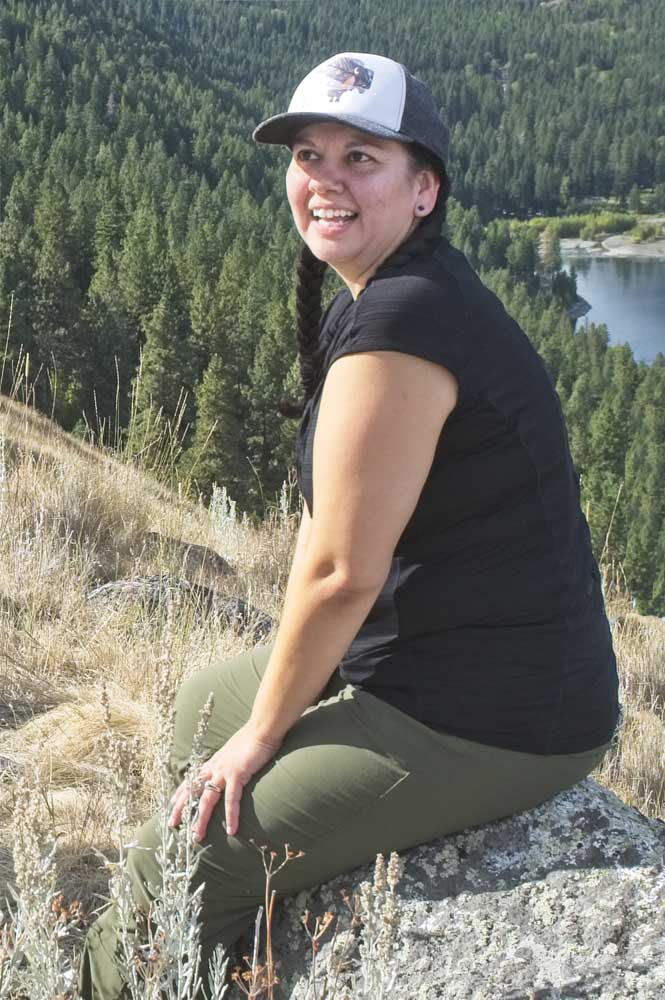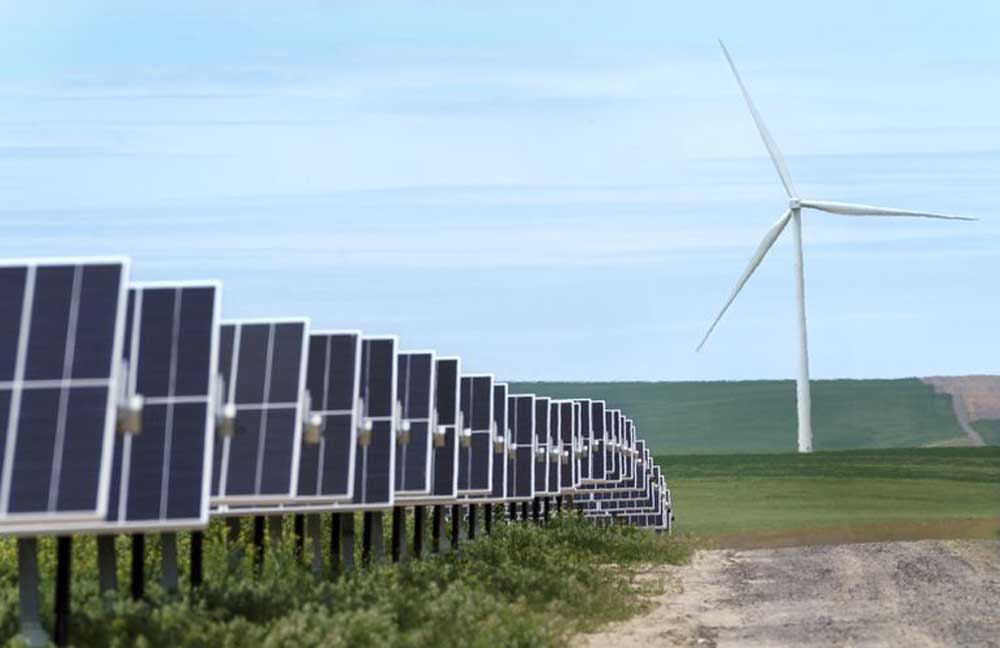Voice of the Chieftain Skwumqn’alqs’ words.
Published 6:00 am Wednesday, September 18, 2019

- Amelia Marchand, a Nez Perce who is Environmental Trust Program Director for the Colville Tribes, gives a talk about resources and relationships on the east moraine above Wallowa Lake.
Skwumqn’alqs’ words.
Amelia Marchand, whose tribal indigenous name is skwumqn’alqs (changes her dresses) in her grandmother’s San Poil language, presented an inspired, informative, and heartfelt talk on the crest of the east moraine on Saturday, Sept. 15. She holds a BS degree in Anthropology from Eastern Washington University as well as a masters degree in environmental policy. Below are excerpts of her extemporaneous talk. The full transcript of her talk is posted on the Chieftain’s website.
“My namesake, Amelia, was a young girl during the Nez Perce war. Many of us are here because we love the land, the botany, the geology here. All those stories are interconnected. And you can’t entirely separate the people from the land. In the work I’ve chosen to do that’s something I recognize. The first archeological site that I visited when I was 14 or 15 was a pictograph site near the Colville Rez. To see a piece of history that so few people have seen but is so real and tangible, I feel is very, very special. And that’s what all of this is as well. Where else can we go and see a landscape like this, where else are the mountains going to have those same shadows? It’s part of the fingerprint of the landscape.
When I was a senior going to college, I had an internship at the Museum of Arts and Culture (MAC) in Spokane. They were putting together a photography exhibit and trying to find images of the women and children of the Columbia Plateau. So for hours I would go through the photographs. They were faces of people that I didn’t know. And I remember thinking, “I wonder if any of the unnamed women or unnamed children are my relatives.” Maybe they were Amelia. I don’t know. She would have been my great, great grandma. My dad remembers her. She could understand and speak English.
One night when I was working, after I’d been at the MAC reviewing the photograph collection, I had a dream. There was a long line of people. Some were walking, some were on horseback. And it was men, women, children and it was like they walked out of those photos. They were all speaking in the language. They were walking together up a trail, and laughing and talking. In my dream, I stood there and watched them go by. And I couldn’t understand them. Because I don’t speak that language. But language is something that we are trying to get back, because within our language is the history of this place, and the story of these rocks here, is the story of this lake, and the mountain peaks, and so part of my personal interest for a long time has been trying to support our languages.
This spring, I had a meeting with my staff. What I heard over and over again is that a lot of people aren’t super keen about the term ‘resources’ when talking about the environment.
I’m encouraging the staff to look at things in a more holistic way, not as compartmentalized as people have often done in the past. When you think more holistically, about how things are connected, it changes the perspective from resources to relationships. You think about things differently when you are talking about a relationship. And that is also part of the discussion for this place too.
This idea not in past tense. It’s not just something that we did long ago. It’s now. It’s as valuable today as it was before.
Building relationships with the natural world and your neighbors is an investment. Because in that giving, in those relationships, there’s the reciprocity, where if you are good to your neighbor they will always be good to you. We are neighbors with the soils and all the animals and I think that’s not something that people remember very often. We are not just talking about cultural resources or natural resources of protecting one site from development. We are talking about living together in a good way.
My father is a Vietnam veteran. My husband is a combat veteran of two tours in Afghanistan and one in Iraq. For the last three years we’ve been participating in a veterans healing retreat on the Yakama reservation. One of the things we think about when we go to that retreat is the impacts that the Nez Perce war so long ago had on the people, families, children, the men and women who had to fight because women fought too.
In 2001, just by sheer coincidence my husband was in the process of signing his enlistment papers in the recruiting office when the planes hit the towers. So 9/11 is very significant to him.
The one time we went to New York City was in 2008. We wanted to go to the 9/11 memorial. So (after we’d made reservations) I called the hotel and asked them where it was in relation to the hotel. But the woman at the desk didn’t know.
When we got to New York, we found our hotel. As soon as we could we went out for a walk. There seemed to be a lot of construction there. But we found a quiet street, and at the end of the street, there was a large mural on the wall. It was to commemorate 9/11. There were some people at the end of the street, watching the construction in a very deep hole in the ground. And as it turned out, that was where the twin towers had been.
It was just around the corner from our hotel.
Our feelings of that incident — to remember, to never forget, that’s also my feelings for here. In war, nobody wins, regardless of what war it is. The land will survive. But in terms of being good neighbors and building good relationships, with people and with land, that’s what we have to do for ourselves.”








